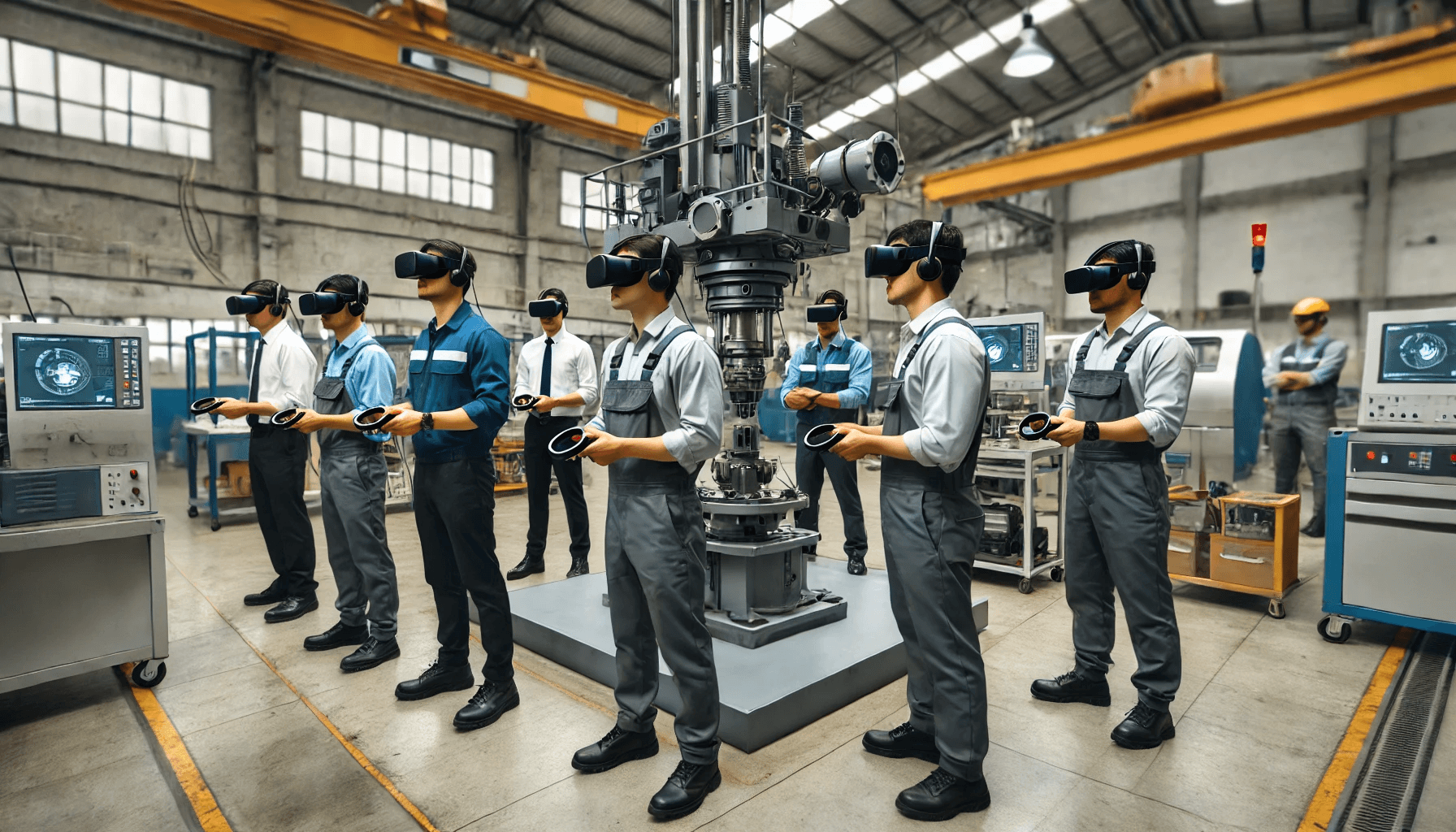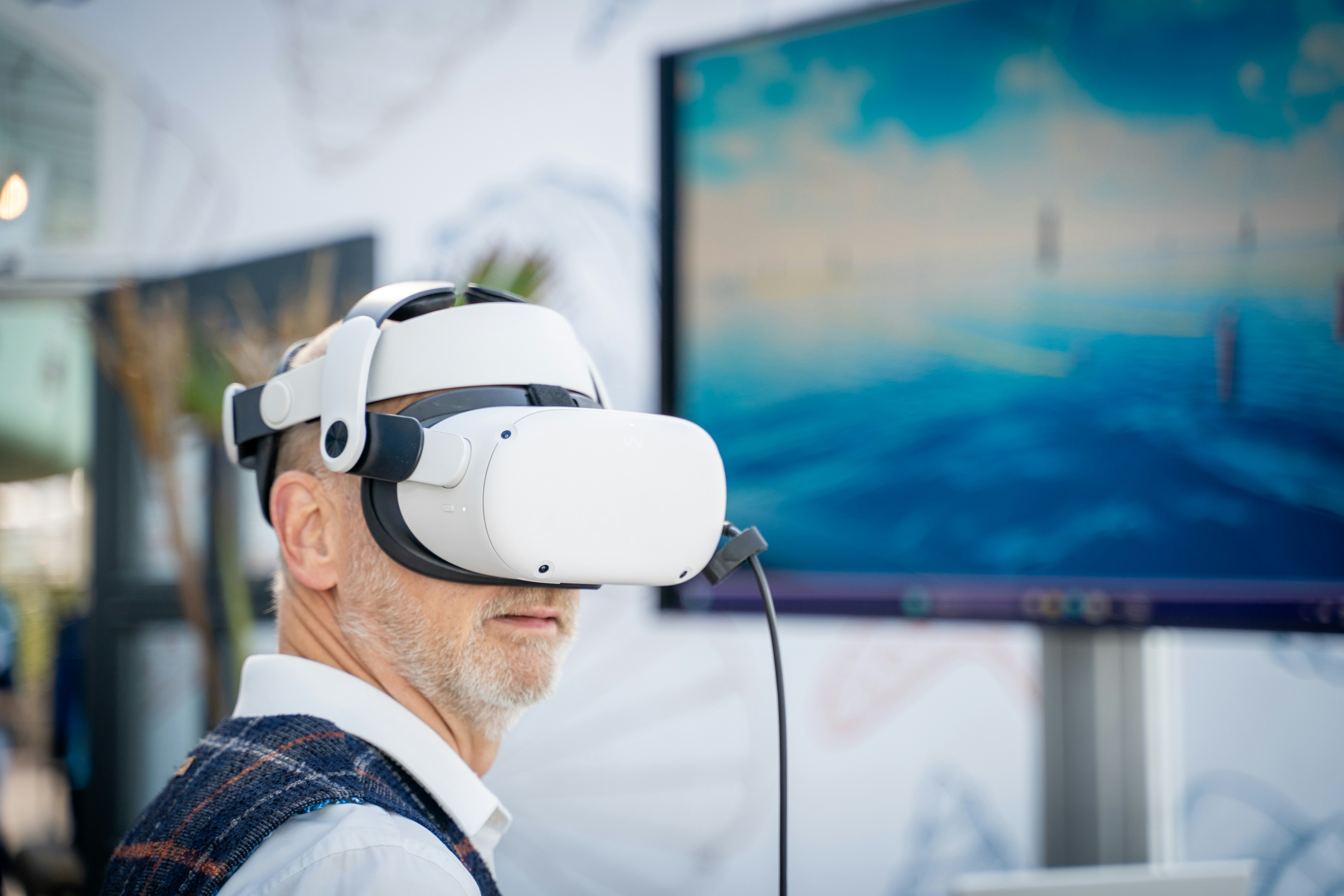You’re standing on the precipice of a potential VR revolution within your organization.
You’ve made the pitch. You’ve outlined the benefits. You’re waiting for the final yes.
But the answer, 9 times out of 10, turns out to be a no.
Concepts and bullet points just won’t cut it for a project as transformative as VR
Your stakeholders—your decision-makers—need more than mere numbers on a slide.
They need to see it. They need to feel it. They need to experience it.
Now, this is where a VR pilot comes in.
With a VR pilot, you bring this new tech into the hands of your users and stakeholders. You showcase the potential of VR with a real-world example.
It also helps align the multiple departments key to a successful VR rollout. These include C-suite executives, LxDs (Learning and Experience Designers), IT and security, digital and XR, and safety and production teams.
This small-scale implementation can be powerful. It can be your biggest ally in getting the green light for a larger rollout.
Benefits of a VR Pilot
Showcase Potential
If you’re hoping to convince stakeholders to invest in VR, you need to put them in the front-row seat and demonstrate VR live.
Because nothing, I mean nothing, beats a live, immersive experience. Nothing helps you
understand what VR can accomplish until you put on a headset.
Just picture the situation. Your decision-makers are in VR. Suddenly they’re no longer just hearing about your ideas—they’re experiencing them.
Your ideas are no longer abstract. They’re very much real.
And that? That’s what we call a WOW moment. It’s when the reality of VR’s potential sinks in and your brain starts to conjure up prospective ideas that you can implement in VR.
That makes all the difference.
Foster Bi-Directional Change
Getting the C-suite on board is one thing.
But imagine if you have everyone—from your frontline employees to senior leaders—rooting for you.
Well, a VR pilot helps you build this bidirectional support. You can push for adoption from the bottom up while also attracting investment from the top down.
Bottom-Up Adoption: When the employees see VR solving pain points they face in their day-to-day, they become the technology’s organic advocates. Also, their feedback is invaluable. They’re the ones who can truly tell you where your VR pilot shines and where it needs adjustment. What’s more, VR excites the newer workforce that is coming in. It’s now a proven method for skill development across critical operational processes.
Top-Down Support: When an individual leader of yours sees VR’s value firsthand, they’re more likely to view it as a potential part of your enterprise’s improvement strategy. Rather than just a “cool” idea. It usually paves the way for smoother approval processes, resource access, and bigger ideas.
Failure is Safe
The fear of failure is one of the biggest barriers to new tech adoption. Because most of the time, the mindset is: Why fix something that isn’t broken?
With VR, that fear can be higher. Simply, because most people lack in-VR experiences.
You keep that risk manageable with a pilot project. You’ll be able to experiment, test, and learn - without jeopardizing significant budgets or operations.
Risk Management: With a pilot, you get to test VR’s capabilities and limitations on a small scale. So if there are any hiccups, they stay contained. Also, financially, a pilot doesn’t break the bank. Operationally, you’re not disturbing workflows or compromising productivity either. This makes it easier to sell to cautious stakeholders.
Learning Opportunities: Any pilot is bound to reveal challenges you didn’t anticipate. But here’s the benefit: you get to uncover these issues early on. So, you can learn from them, and refine your approach. It prepares you for a smoother, more successful transition when you go full-scale.
Conclusion: VR Pilots—Small Changes, Big Impact
Rolling out a VR pilot may seem like a small step. But don’t underestimate its power to create big ripples.
By giving stakeholders and end-users alike a chance to experience VR on a manageable scale, you’re building a case that’s hard to ignore.
Each small success in the pilot phase compounds. Even to a level where it’s an integral part of your company’s strategy.
Because you’re not just implementing new tech—you’re setting the foundation for a cultural shift.



